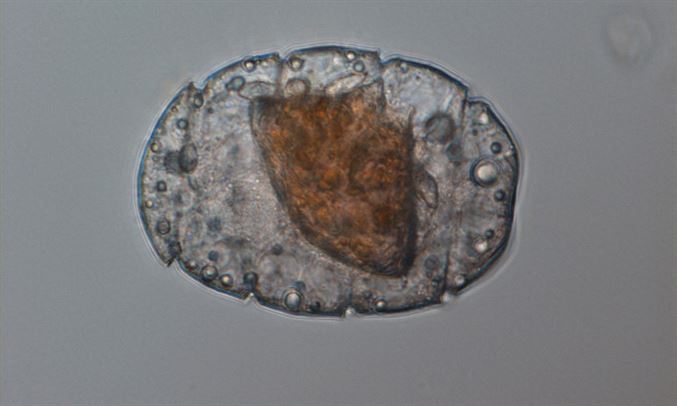This species exhibits a notable pseudocolonial structure, with each colony being composed of multiple zooids. Typically, there is one nucleus for every two zooids, and the number of zooids in a colony can be 2, 4, 8, or 16. When observed from below, the individual cell shape appears roughly cylindrical, with flattened areas at both the apex and antapex of each zooid.Each zooid features a cingulum positioned centrally with no displacement. The sulcus, a specific region on the cell surface, extends continuously between the zooids. It is centrally located along the apical-antapical axis. Notably, the nuclei are situated in the sulcal area, contributing to the distinctive structural organization of this species.In addition to its unique cellular structure, nematocysts and food vacuoles can also be present in these organisms, reflecting their role in capturing prey and ingesting food particles. This distinctive combination of features underlines the remarkable adaptability and ecological significance of this pseudocolonial species.
